This post may contain affiliate links. Please read my privacy policy.
Hokkien Char is a stir-fried noodle dish loaded with pork, shrimp, and vegetables in a savory soy-based sauce. This Penang Hokkien Char recipe is quick, homemade, and ready in just 30 minutes!
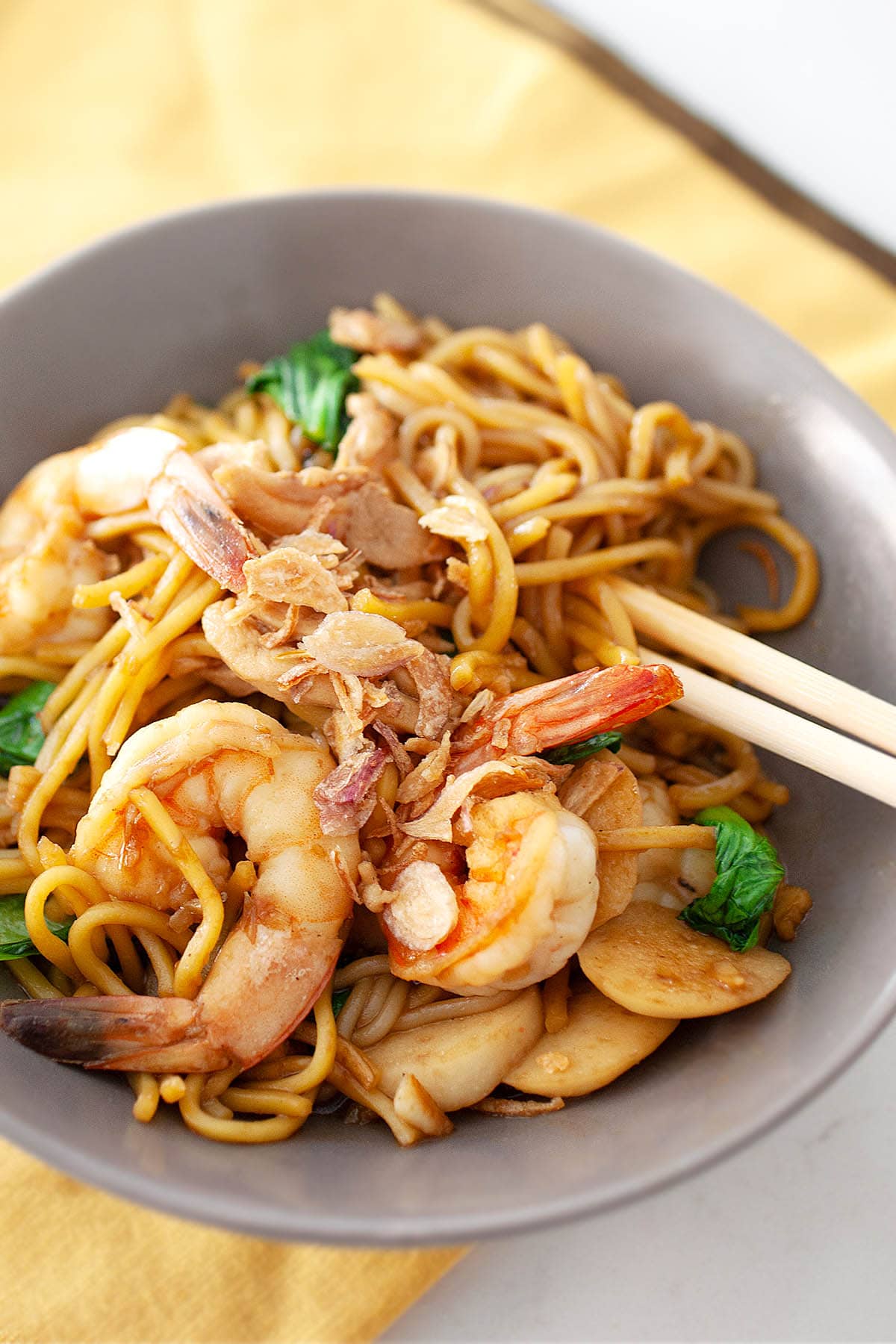
Hokkien Char Mee
Hokkien Char is one of those classic dishes with roots in Fujian province, China. “Hokkien” refers to the dialect spoken there, and in Malaysia, it’s used to describe the Chinese descendants from Fujian who settled in Southeast Asia, especially in places like Malaysia and Singapore. In Penang, where I’m from, Hokkien Char is one of my go-to noodle dishes, and it’s a favorite at hawker centers.
This dish, also called Hokkien Char Mee (which literally means “Hokkien Fried Noodles”), is a stir-fried noodle dish served in a savory sauce, often accompanied by sambal belacan for an extra kick. In Penang, it’s typically made with a combination of yellow noodles and rice vermicelli, cooked in a lighter, flavorful sauce. The sambal belacan is the perfect addition to spice up the noodles.
If you’ve ever been to a Char Hor Fun stall in Penang, you’ve likely come across Penang Hokkien Char, since these vendors typically offer a variety of noodle dishes like Hokkien Char, E-Fu noodles, and Char Hor Fun. It’s one of those dishes you won’t want to miss.
This is my easy Hokkien Char recipe—enjoy the rich, aromatic flavors of Penang in the comfort of your home!
For more delicious Malaysian noodle recipes, check out my Wonton Noodles!
Different Types Of Hokkien Noodles
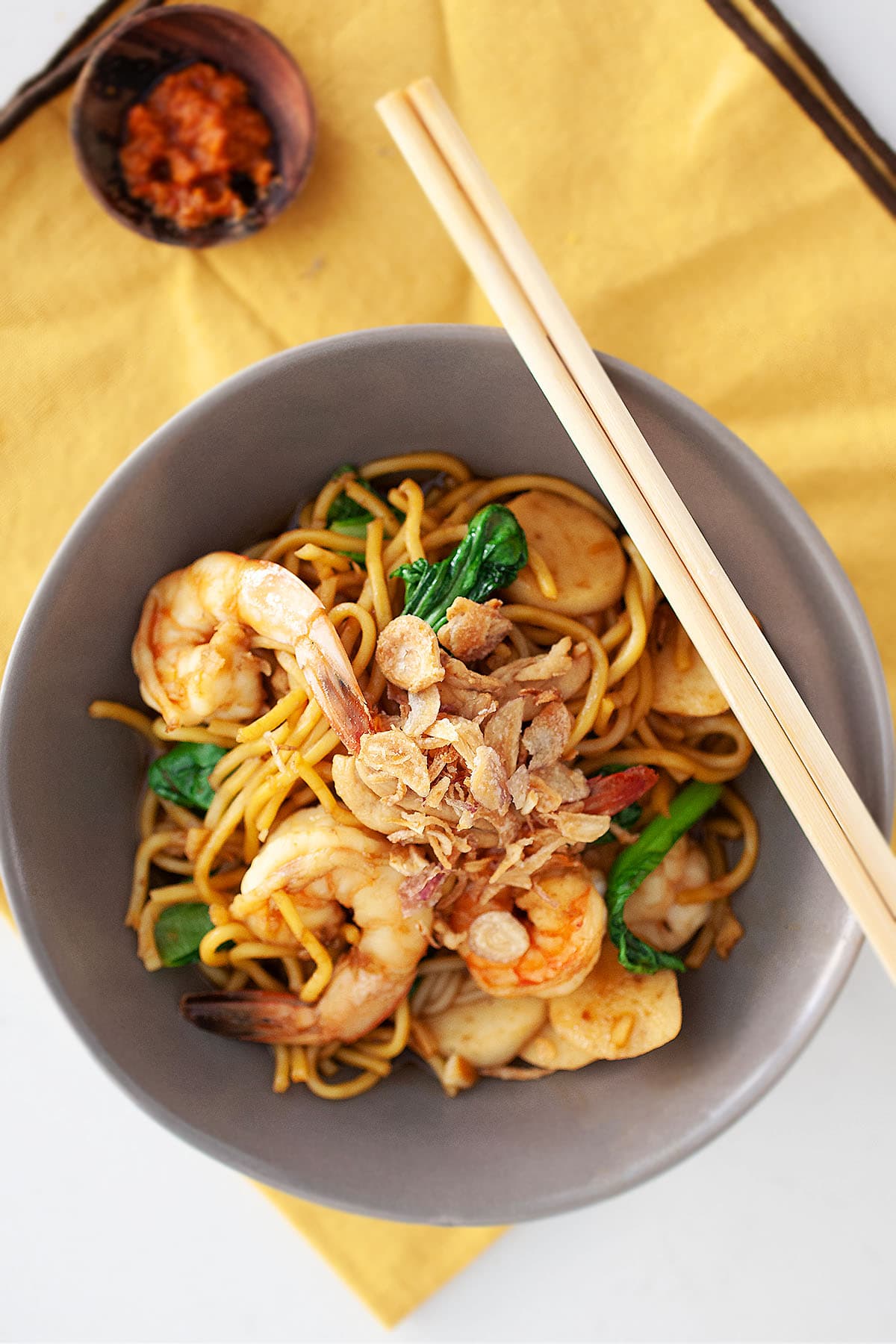
Here’s how the different versions of Hokkien noodles compare:
- Hokkien Char (Penang): This classic wok-fried noodle dish is all about hitting the perfect balance of flavors. A mix of yellow noodles and vermicelli is stir-fried with pork, prawns, and veggies in a savory soy-based sauce. It’s smoky, flavorful, and so satisfying in every bite!
- KL Hokkien Mee: Think of this as the heartier, bolder version. The thick yellow noodles are stir-fried with pork, prawns, veggies, and pork lard in a rich, dark soy sauce, giving it that deep, savory flavor that sticks with you.
- Singapore Hokkien Mee: This one’s lighter and has a nice balance between the yellow noodles and rice vermicelli. Stir-fried with prawns and squid, it’s usually served in a savory broth with sambal and a squeeze of lime to add that zing.
- Penang Hokkien Mee: This one’s my absolute favorite. The highlight is the rich, spicy prawn broth—it’s comforting and full of flavor. With a combination of yellow noodles and rice vermicelli, juicy prawns, pork, and a hard-boiled egg, it’s a dish I can never get enough of.
Ingredients You’ll Need
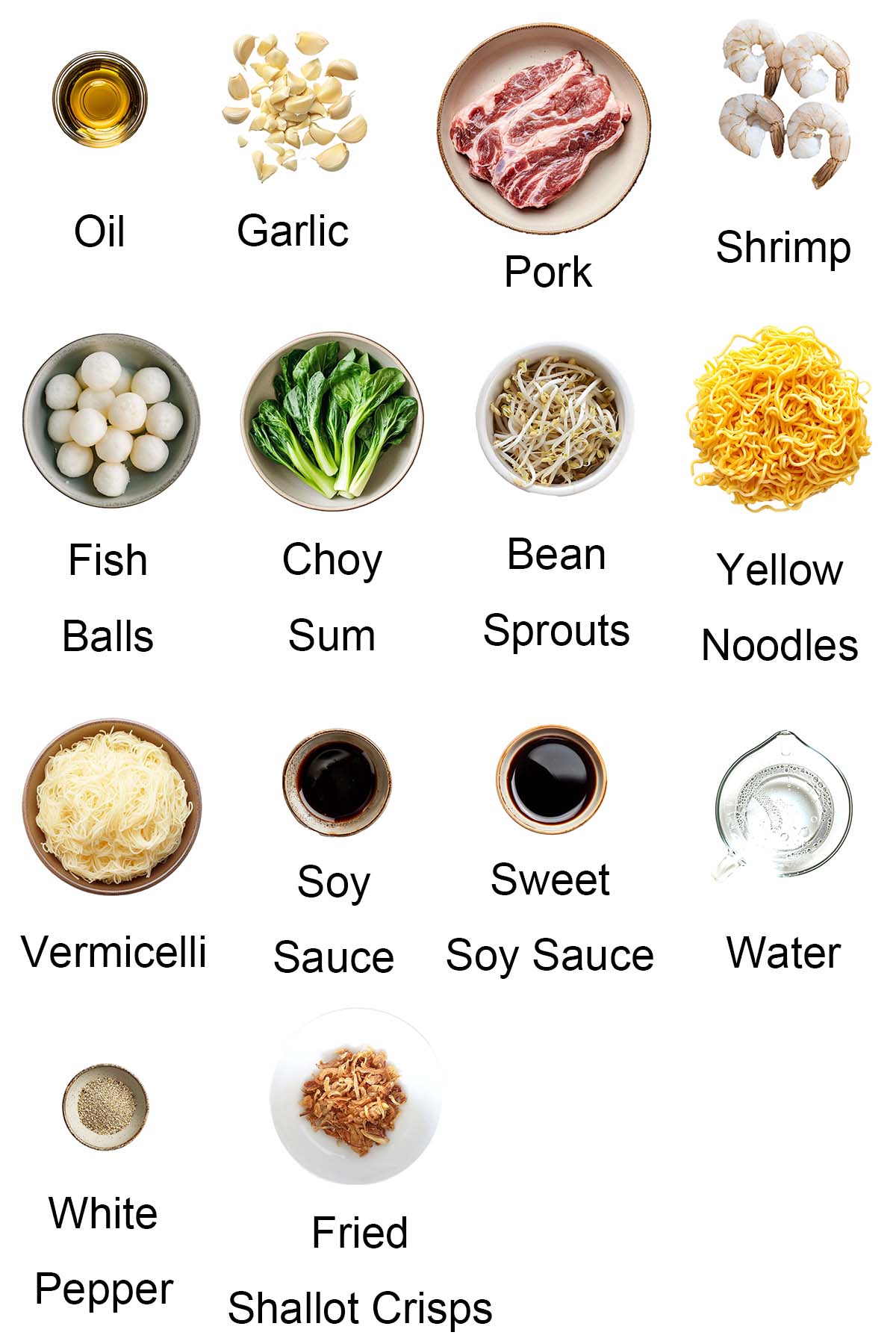
- Oil – Use vegetable oil.
- Garlic
- Pork – Use pork shoulder or pork loin.
- Shrimp
- Fish balls – You can also use fish cakes as a substitute.
- Choy sum/Chinese mustard green – You can substitute with Chinese broccoli (gai lan) or bok choy.
- Bean sprouts
- Yellow noodles – If you can’t find the Hokkien yellow noodles, lo mein noodles would be a great substitute.
- Vermicelli
- Soy sauce
- Sweet soy sauce – You can also use regular dark soy sauce or caramel sauce as a substitute.
- Water
- White pepper
- Fried shallot crisps – You can grab some store-bought fried shallot crisps at most Asian grocery stores for a quick shortcut, or, if you’re up for it, make your own at home!
Please refer to the recipe card at the bottom of this post for full details on each ingredient.
How To Make Fried Shallot Crisps: To make them, just thinly slice the shallots, fry them in hot oil until they’re golden and crispy, then drain them on paper towels to get rid of any extra oil.
How To Make Hokkien Char
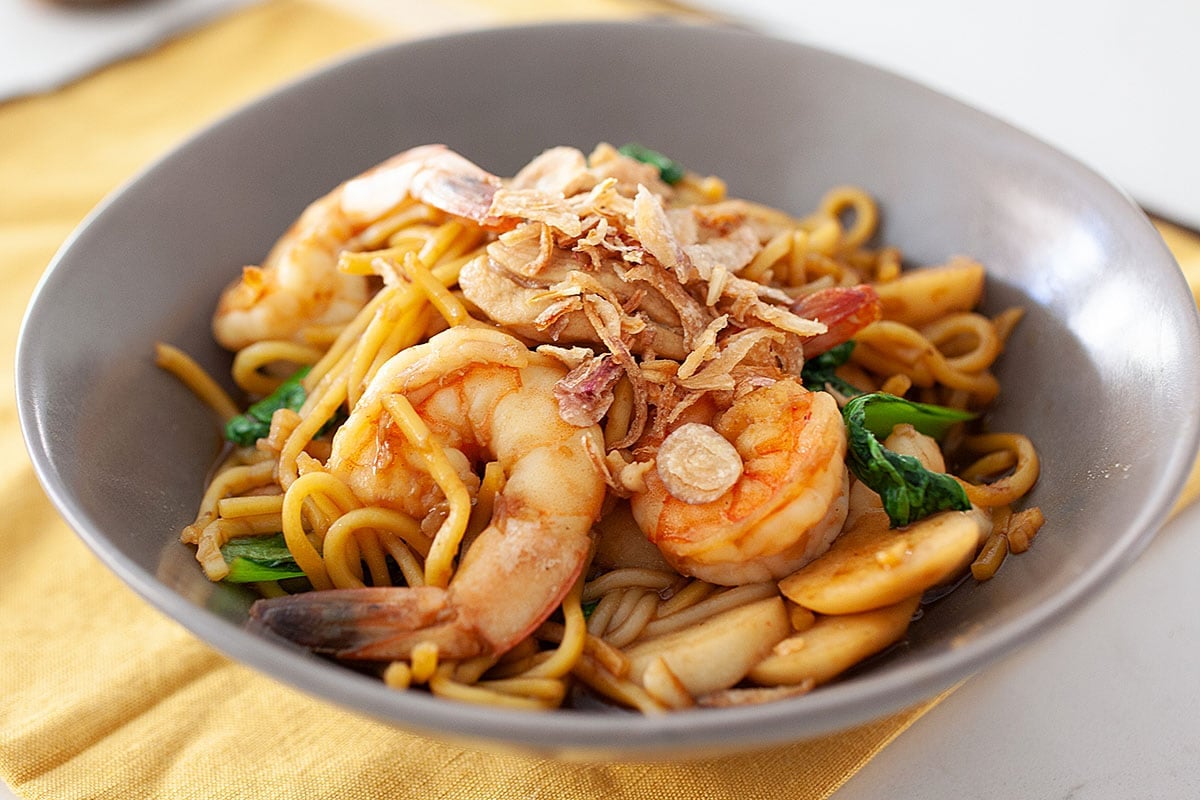
Alright, heat up your wok over high heat and add a little oil. Once the oil’s nice and hot, toss in the minced garlic and stir-fry it until it smells amazing. Now, throw in your pork slices, shrimp, and fish balls—just stir-fry them until they’re about halfway cooked. Next, add the choy sum, bean sprouts, noodles, and vermicelli. Give everything a quick toss with your spatula to mix it all up.
Now, pour in the soy sauce, sweet soy sauce (kecap manis), water, and a dash of pepper powder. Keep stirring everything together until the noodles are nice and cooked through—just be careful not to overdo it. Once it’s all perfect, dish it out and top it with those crispy fried shallots for that extra crunch. Don’t forget to serve it up with a little Sambal Belacan on the side for that spicy kick! Enjoy!
Secrets To the Best Hokkien Char Mee
- I usually go for lean pork like loin or shoulder—it’s tender, flavorful, and perfect when sliced thin for this recipe. If you’re after something richer, pork belly adds incredible flavor with its balance of meat and fat.
- Whatever cut you pick, just slice it nice and thin so it cooks fast and mixes beautifully with the noodles and sauce.
- Here in the U.S., I can’t always find Malaysian thick soy sauce or caramel sauce, which has that perfect hint of sweetness. Instead, I use Indonesian kecap manis—it’s a great substitute. If you’re in Malaysia, stick with the local thick soy sauce for the best results. Can’t find kecap manis? No problem! Chinese dark soy sauce works too; just add a pinch of sugar to balance out the flavors.
- I never skip the fried shallot crisps—they add the perfect crunch and a savory kick that takes the dish to the next level. When I’m short on time, store-bought ones do the trick, but if I have a moment, I’ll make them myself.
- Don’t skip the Sambal Belacan! A dollop on top adds the perfect spicy kick that takes everything to the next level.
Frequently Asked Questions
Yes. You can slice the pork, prep the shrimp, and chop the veggies ahead of time. Even frying the shallots can be done in advance, so when it’s time to cook, everything’s ready to go.
Yes, you can make Hokkien Char with all yellow noodles! While the traditional recipe often combines yellow noodles and rice vermicelli, using just yellow noodles will still result in a delicious dish. The texture will be slightly different, but it will still be flavorful and satisfying.
Absolutely! You can skip the fish balls altogether or replace them with fish cakes.
Keep any leftovers in an airtight container in the fridge, and they’ll stay good for up to 2 days. When you’re ready to eat, toss them in a hot wok or skillet with a splash of water to bring the sauce back to life and refresh the flavors.
Freezing isn’t the best option for noodles, since they can get mushy once thawed. It’s best to cook them fresh for that perfect bite!
This recipe is only 858 calories per serving.
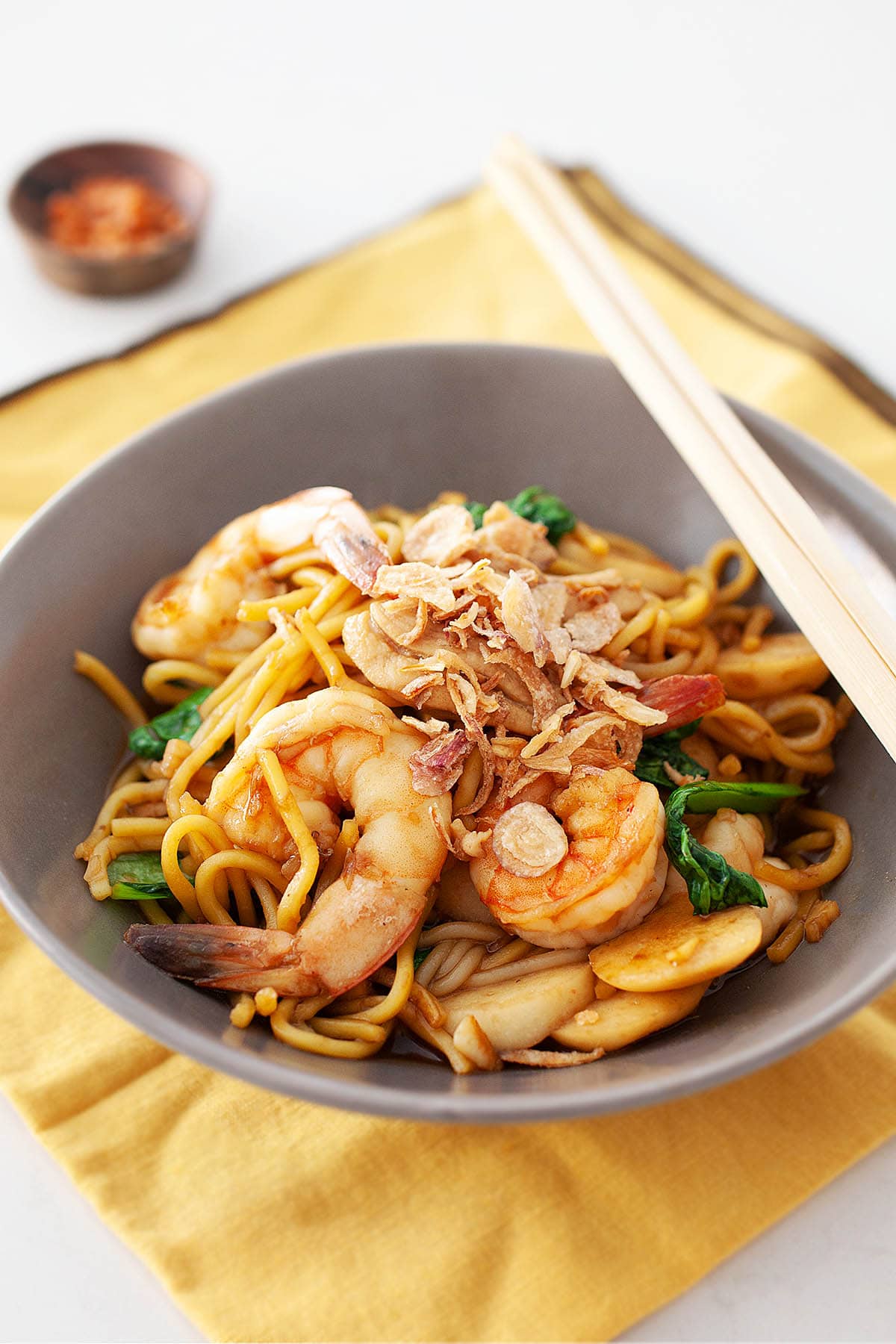
What To Serve With Hokkien Char
For a Malaysian street hawker food feast, I recommend the following recipes:
I hope you enjoy this post as much as I do. If you try my recipe, please leave a comment and consider giving it a 5-star rating. For more easy and delicious recipes, explore my Recipe Index, and stay updated by subscribing to my newsletter and following me on Facebook, Pinterest, and Instagram for new updates.

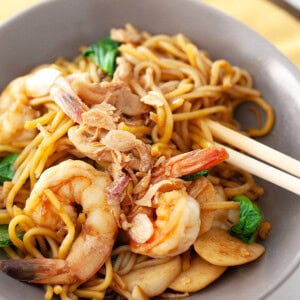
Hokkien Char
Ingredients
- 2 tablespoons oil
- 2 cloves garlic, minced
- 2 oz (60g) pork, cut into slices
- 6 shrimp, shelled and deveined
- 4 fish balls, cut into slices
- 2 oz (60g) choy sum/Chinese mustard green, cut into 2-inch lengths
- 4 oz (125g) bean sprouts
- 6 oz (175g) yellow noodles, rinsed with cold water, drained
- 6 oz (175g) vermicelli, soaked in warm water until soft, drained
- 2 1/2 tablespoons soy sauce
- 1 1/2 tablespoons sweet soy sauce, kecap manis
- 3/4 cup water
- 3 dashes ground white pepper
- Fried shallot crisps
Instructions
- Heat a wok over high heat and add cooking oil. Once the oil is hot, add the minced garlic and stir-fry until fragrant. Add the pork slices, shrimp, and fish balls, and stir-fry until they are half-cooked. Then, add the choy sum, bean sprouts, noodles, and vermicelli, tossing all the ingredients quickly with a spatula.
- Add the soy sauce, sweet soy sauce (kecap manis), water, and white pepper, and keep stirring until the noodles are cooked through, being careful not to overcook them. Dish out and garnish with fried shallot crisps. Serve immediately with a dollop of sambal belacan.
Notes
- I usually go for lean pork like loin or shoulder—it’s tender, flavorful, and perfect when sliced thin for this recipe. If you’re after something richer, pork belly adds incredible flavor with its balance of meat and fat.
- Whatever cut you pick, just slice it nice and thin so it cooks fast and mixes beautifully with the noodles and sauce.
- Here in the U.S., I can’t always find Malaysian thick soy sauce, which has that perfect hint of sweetness. Instead, I use Indonesian kecap manis—it’s a great substitute. If you’re in Malaysia, stick with the local thick soy sauce for the best results. Can’t find kecap manis? No problem! Chinese dark soy sauce works too; just add a pinch of sugar to balance out the flavors.
- I never skip the fried shallot crisps—they add the perfect crunch and a savory kick that takes the dish to the next level. When I’m short on time, store-bought ones do the trick, but if I have a moment, I’ll make them myself.
- Don’t skip the Sambal Belacan! A dollop on top adds the perfect spicy kick that takes everything to the next level.
Nutrition
Nutrition information is automatically calculated, so should only be used as an approximation.
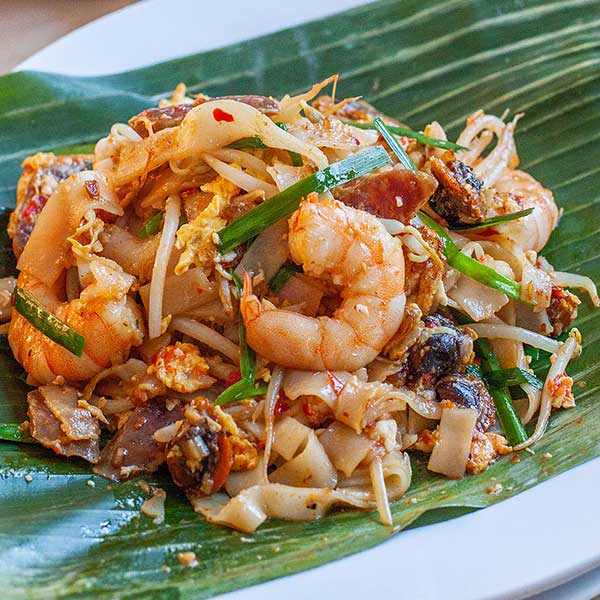
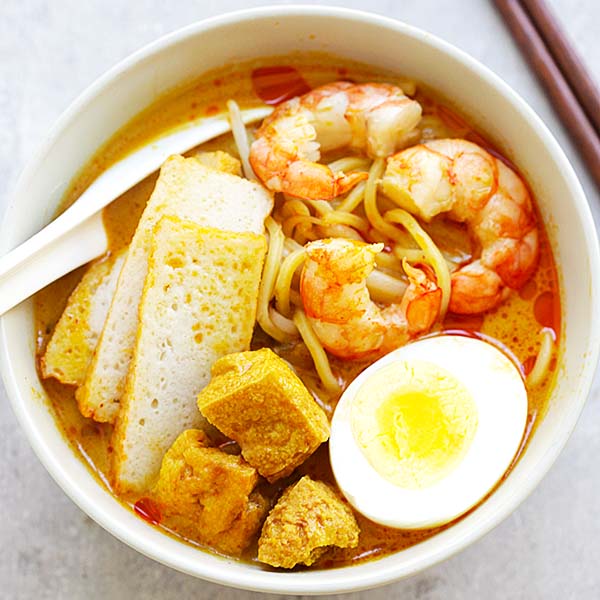
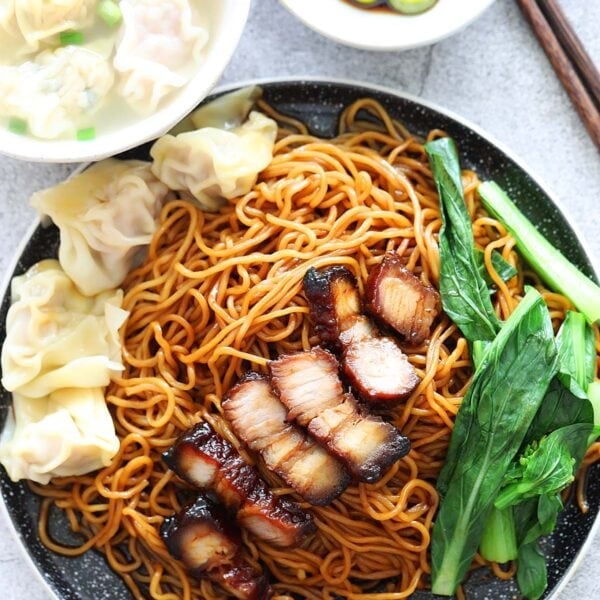
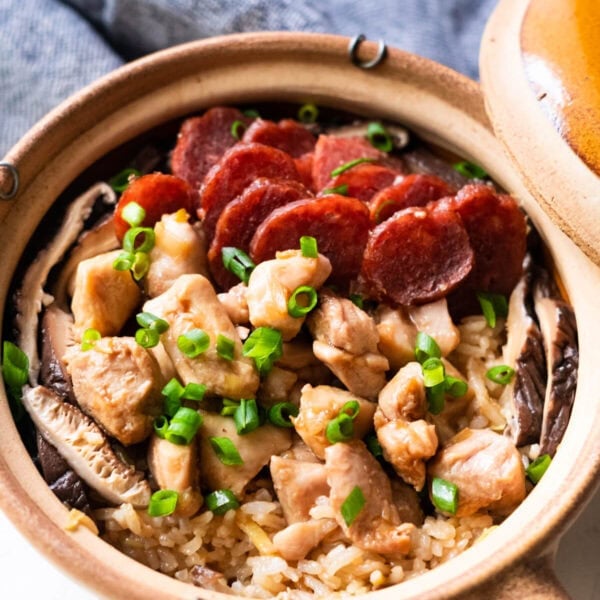






Your Blog looks great! I share all those great Penang hawkers food to all my friends. I missed Penang food so much, like you said Noodles are my top choice. Each time I’m in Penang I will go for Noodles Soup or Fried Noodles. Thank you for the recipe and keep coming!